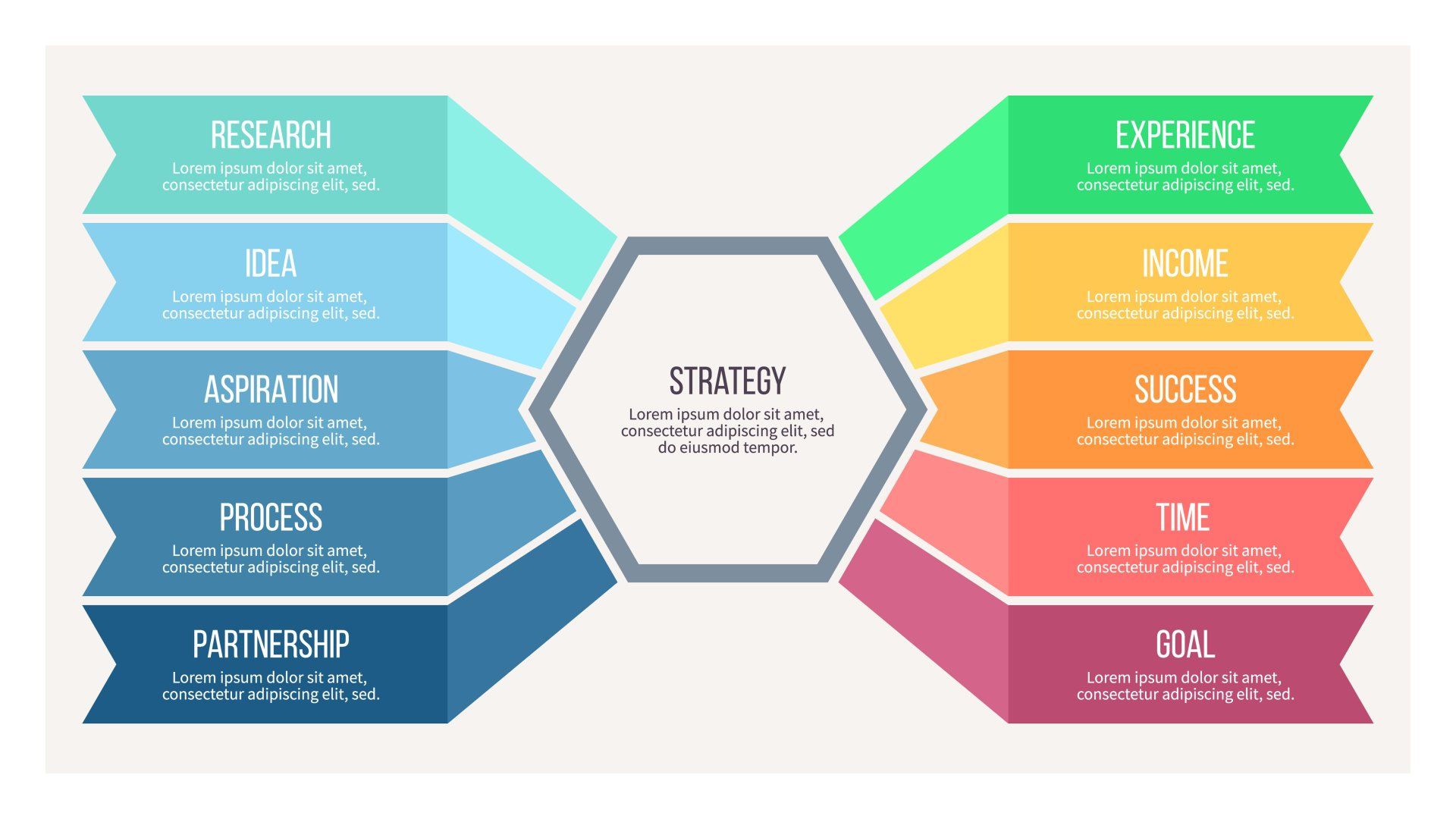Fast ranking steps for small businesses
Cotswold Web • 12 May 2020
Think it’s only big businesses which can rank on Google? Think again!

Photo by Joshua Rodriguez on Unsplash
There are many ways in which small and medium sized business can rank highly on Google and other search engines. You just need to know what they are.
Internet marketing guru Neil Patel has some great suggestions, which we have summarised here.
Read on for some top tips on how to rank on search engines as a small business…
Find the keywords big brands don’t want
As a small business, you will never rank for very popular keywords, so it makes sense to target keywords which don’t interest the big brands. The best ones to target are ‘longtail keywords’ – phrases of three, four or five words.
They will drive less traffic, but when someone types that combination of words into a search engine, you are far more likely to rank because fewer companies will be targeting them.
And because the keyphrase is so specific, visitors who come to your site from a longer query are far more likely to convert – whether that is buy something, download something or sign up for your regular email newsletter.
Update content with alternative keywords
The more keywords you target, the more potential traffic you can get. When you know which keywords you rank for, you should put those keywords into Neil Patel’s Ubersuggest tool, which will show you longtail variations of the keywords.
So for a dance school writing an informative post about ‘Grade 2 ballet’, Ubersuggest recommends longtail keywords including ‘Grade 2 ballet music’, ‘Grade 2 ballet age’ and ‘Grade 2 ballet character dance’. By integrating these longtail keywords into a web page which already ranks for ‘Grade 2 ballet’, the post will quickly start ranking for the longtail terms too.
Sometimes you can just add the keywords into a post, but generally you will need to take the time to adjust and expand your content to make sure it flows properly.
Photo by Priscilla Du Preez on Unsplash
Local SEO
If you are a local business, SEO is much easier than if you’re targeting large national or international audiences. Google can easily identify when someone is searching for a nearby company.
Start by claiming your business on the Google My Business listing and make the most of it with great photos. You should also claim your business on other sites where people get their information, like TripAdvisor, Facebook and Yelp.
On your own website, include your full address and a map, so that visitors can find your shop or office. Add your phone number, which should be a landline with a recognisable local dialling coded (like 01242 for Cheltenham or 01452 for Gloucester), and make sure someone can click on the number direct and call from their mobile.
Always include customer reviews and testimonials on your site, which are especially important for a local business.
Focus on video
YouTube isn’t just somewhere to catch up on the latest hilarious viral video, it is actually the second biggest search engine after Google.
And, most importantly, people get and retain a lot more information from video than they do from reading alone.
‘How to’ videos for everything from car repairs to garden tips or starting a blog are always popular. Make the most of this, by using short, relevant and useful YouTube videos which will direct traffic to key pages on your website.
Create infographics
An infographic is a visual representation of some interesting data. More people prefer getting their information in this way than by reading text, particularly if the text is complicated or contains a lot of numbers.
You can create your own infographic by going to Neil Patel’s Ubersuggest tool and typing in a keyword related to your own website or business. This will bring up popular blogs, based on social shares and backlinks. Look at these and find a blog containing interesting data or a lot of numbers, which would work well visually. Take this data to create your own infographic, using a design tool like Canva.
Once you have your infographic, put it on your website and make sure you share it on social media and with your subscribers. Make sure you also go back to Ubersuggest and the original article where you got your information from, and find everyone who linked to it. You can then send each of them an email with the link to your infographic. From there, it should generate more social shares and more backlinks, as people link back to it from their own sites.
Hire a content writer
Just because you own a business and a website, it doesn’t make you a good writer. As Google typically ranks sites with in-depth content more highly, hire a ghost writer (either a freelancer or a member of staff), who has the time and the skills to write good quality content.
Work with your writer to come up with titles, content ideas and keywords. Ubersuggest will give you an idea of which keywords do well, based on search traffic, social share and backlinks. Once you have a plan for your content writer, leave them to write blogposts and articles, while you focus on other aspects of the business.
Photo by Green Chameleon on Unsplash
Check out your competitors’ pages
If you’ve got a small business and a small website which you want to grow, you need to know what the competition is doing. Before you write any content for your own website, you can check out your competitors on Ubersuggest. When you enter their URLs, Ubersuggest will bring up all of their top pages and the keywords they rank for.
Then take a look at their popular pages and create more in-depth versions of them. If you already have similar posts on your site, update them. Make your post the definitive version of whatever your competitors are offering, so visitors only need to look at your site to get all the information they need.
Check for recent backlinks
Don’t just check your competitors’ pages once and forget them. Keep checking them regularly on Ubersuggest and look for recent backlinks.
If somebody linked to your competitor last week, they could be open to linking to your website today, so get in touch with them.
They are far more likely to link to you than someone who wrote about a topic five years ago and hasn’t updated their post since.
Photo by Roman Kraft on Unsplash
Create a round-up post
We all want to get our information quickly and easily, so make it easy for visitors to your website.
Go to Ubersuggest and type in a relevant keyword, such as ‘garden design’. Ubersuggest will then bring up all the popular articles on garden design.
You can then bring all of those articles together into a useful round-up post, such as 20 garden design resources you need in 2020 or 20 garden design resources for a small garden. With each of the 20 posts, add a few lines describing the content, and add the link, so your readers can get the information they need.
Once your article is live, go back to Ubersuggest and email everyone who has already linked to those original articles. Ask them to link to your post too – or to share it on their social media or email newsletters – and watch the traffic increase to your site.
Spend time promoting your content
You (or your ghost writer) has put time and effort into researching and writing a post and sourcing the perfect images. But the work doesn’t stop there. Now you need to spend time promoting it. You should spend as much time as you’ve spent creating the content on promoting it – or even more if you can spare the time.
As well as sharing it on your own social channels, contact anyone you’ve linked to in your article and ask them to share it too. You can also go back to your competitors’ posts using Ubersuggest and find out who linked to them. Then email those people telling them about your new article, and the additional points you make that the competition didn’t cover.
You can also find out who has shared your competitors’ articles on Twitter, by going to search.twitter.com and pasting your competitor’s URL into the search box. This will show every account which shared your competitor’s article.
You can then tweet or direct message (DM) them and ask them to share your article too, which will increase your social shares further.
Photo by Priscilla Du Preez on Unsplash
Nurture your community
If someone leaves a comment or question on your blog, Facebook, Twitter or YouTube, respond to it! By doing this, you are creating and nurturing a community and building loyalty. By nurturing your community, you are more likely to get social shares and backlinks, because people like to work with real people and good people.
If you come across as a good person on social media, the people in your community will be more likely to search for your brand online.
The more searches you get in Google, the higher you will rank and ultimately, the more visitors will go to your website and potentially buy your products or services in the future.
Check the speed of your site
You can have a great website full of interesting content, but if it loads slowly or isn’t mobile compatible, it won’t rank in search engines.
Site speed is part of Google’s algorithm, so you want to be sure that your website loads as quickly as possible on all devices.
Use Google PageSpeed to check how fast your site loads. If it’s too slow, delete any unnecessary plugins, reduce the size of pictures, enable caching and make sure you are using a reliable web host.
Photo by Domenico Loia on Unsplash
Link to your own content
When you write something new on your website, it’s probably not the very first time you have touched on the subject. If your site is about interior design and you’re writing something new on curtains, you should always link back to other relevant posts and pages on your site
about curtains.
By interconnecting your pages, they will rank higher in searches.
Don’t forget the user
When you write new content, you are writing for SEO, but if you don’t also remember the audience you are writing for, they may never get to see your content.
Google can track user behaviour. So if someone arrives on your site through a Google search, only to click away a second later, it can see that your website isn’t relevant. If this happens too often, your website will slip down the rankings.
So when you write something new, remember the audience you are writing for and make sure you grab them and engage them from the start, so they don’t hit the back button and navigate away.
Photo by Priscilla Du Preez on Unsplash
Don’t use dates in your URL
When you post something new, you will probably put the date in the URL, or some sites will automatically generate a URL for you containing the date. This means that Google thinks a particular piece of content is only relevant to that date. So you may have written something in 2014 which is still relevant today, but that 2014 in your URL is going to be a big deterrent to your post ranking in searches.
Neil Patel found that removing dates from his URLs increased his search traffic by 58%.
Obviously it’s not as easy to do if you have got backlinks from lots of different websites and have already linked to your own content, but it is something to focus on moving forward.
While it isn’t easy to rank on Google and other search engines as a new or small business, it isn’t impossible either.
As these tips show, with a bit of time and effort you can really make a difference and get your business ranking.
More Posts.

In today's digital landscape, effective content marketing can be the key differentiator for small businesses striving to stand out. As consumers increasingly turn to online platforms for information, brands must engage their audiences through valuable content that resonates with their needs. Understanding the nuances of content marketing is crucial; it encompasses various strategies designed to attract, inform, and delight customers while ultimately driving sales. From developing engaging customer personas to measuring success through specific metrics, small businesses have an incredible opportunity to refine their marketing approach. This article explores eight proven strategies that can lead to content marketing success for small businesses, equipping you with the tools necessary to create impactful and sustainable marketing efforts. 1. Understanding the Importance of Content Marketing Content marketing is vital for small businesses. It helps connect them with their target audience, builds brand awareness, and drives organic traffic. A well thought out content marketing strategy lets small businesses compete with larger companies by using cost effective methods. Regularly sharing valuable content can position a business as an expert in its field. This fosters trust and encourages potential customers to seek their services. Documenting your content strategy also increases the chances of seeing your marketing efforts as effective, allowing a higher allocation of budget toward content marketing. Creating a diverse range of content types is key. Here are some content formats to consider: Blog Posts Social Media Posts Email Marketing Visual Content Developing a strategic content plan helps business owners carve out unique market spaces. Establishing clear business goals and using tools like Google Analytics to gauge conversion rates can refine your approach. Below is a quick checklist for effective content marketing: Know your target audience Set SMART goals Use a content calendar Perform a content audit By focusing on these elements, small businesses can enhance their content marketing efforts and achieve growth. 2. Developing Customer Personas for Targeted Engagement To create targeted content, small business owners should develop detailed buyer personas. These personas are fictional versions of ideal customers, including demographic and psychographic details. Tools like Google Analytics and social media insights provide valuable data to shape these personas, making them more accurate. Understanding your target audience through buyer personas is key. It allows content marketers to tailor pieces of content that address specific needs and challenges. This approach boosts engagement and builds trust with potential customers. It is often necessary to have multiple personas to cater to various products, services, or customer segments. Each persona reflects different motivations and interactions with your brand at various stages of the customer journey. Here's how you can develop them: Collect Data: Use surveys, Google Analytics, and social media insights. Analyse: Determine the needs, interests, and behaviours of your audience. Create Multiple Personas: Define different segments based on your findings. Tailor Content: Use the personas to guide your content marketing efforts. Effective personas lead to a successful content marketing strategy, enhancing your business goals with every piece of content created. 3. Crafting a Comprehensive Content Plan Creating a successful content plan is key for small business owners. It acts as a guide to align all your content marketing efforts with your business goals. Here’s how you can craft a comprehensive content plan: Identify Key Topic Areas: Focus on subjects relevant to your target audience. This ensures you create valuable content that speaks directly to potential customers. Choose Content Types: Use a mix of blog posts, infographics, and videos. Different content formats can help engage various segments of your market. Plan Distribution Channels: Decide where to share your content. Consider social media posts, email marketing, and your website for maximum reach. Set Calls to Action: Encourage your audience to take the next step. This could be signing up for a newsletter or visiting a product page. Utilise a Content Calendar: This keeps your content marketing strategy organised and consistent, minimising missed opportunities. Analyse Metrics: Use Google Analytics to track conversion rates, engagement, and content performance. Including these elements in your content plan aligns with the fact that structured strategies significantly boost success rates. Regular content audits refine this strategy further, ensuring continued engagement and growth .

Heading 1 Artificial intelligence (AI) has had a huge impact in many areas of life and SEO is no exception. While it has made online searches easier for consumers, keeping up with it and staying ahead as a business can be challenging. As Google integrates advanced AI into its search results, businesses must rethink their SEO strategies. Understanding the future of SEO in the context of AI is essential to appear high on search rankings and remain competitive. Traditionally, search engine optimisation (SEO) has relied largely on keyword optimisation and link building. If you sell garden products, you would make sure the phrase ‘garden products’ was used frequently throughout your website. You would also look to get some links back to your site from other websites – maybe other businesses in your local area or in a complementary sector. These traditional SEO methods are becoming less effective. AI means search engines like Google and Bing have become better at understanding the intent behind a search, through machine learning algorithms analysing huge quantities of data, as well as natural language processing. Natural language processing doesn’t just understand the words in a query, it understands the context and intent behind it. AI can even understand synonyms, slang and regional variation in language! When someone searches for something online, AI can analyse, interpret and predict their behaviour. So businesses have to adapt their SEO strategies to changing algorithms to stay competitive. You need to have a deeper understanding of your target audience and produce content which meets their needs and answers their queries. It is about providing the best answer to the questions your audience is asking, because AI algorithms are skilled at recognising content which meets the search intent of users and provides value. This means that content which is designed to meet specific needs, answer questions and provide the solutions to problems is more likely to rank higher in searches. AI algorithms will prioritise content which resonates with users on a human level – with every paragraph adding more value and depth. This aligns with AI’s preference for content which engages and informs – and also helps build a stronger connection with your target audience. In addition, AI is making voice searches (e.g. Alexa) much more effective. Voice searches tend to use more words than online searches e.g. ‘find me healthy snacks for pre-school children’ rather than just typing ‘healthy snacks’ into Google with no context. This aspect of AI will continue to grow in importance and become even more widely used.










